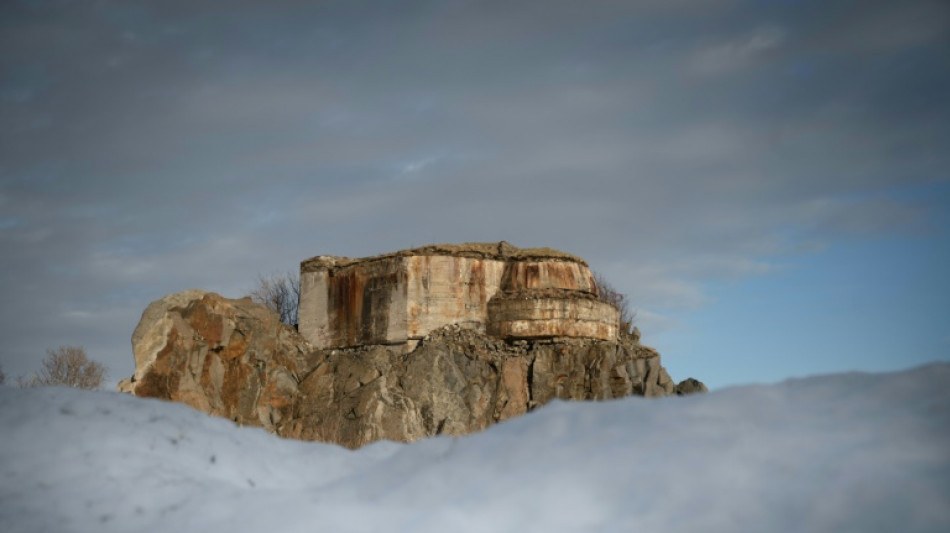
-
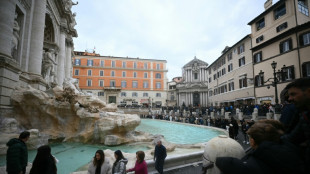 Rome to charge visitors for access to Trevi Fountain
Rome to charge visitors for access to Trevi Fountain
-
Spurs 'not a quick fix' for under-fire Frank

-
 Poland president accuses Ukraine of not appreciating war support
Poland president accuses Ukraine of not appreciating war support
-
Stocks advance with focus on central banks, tech

-
 Amorim unfazed by 'Free Mainoo' T-shirt ahead of Villa clash
Amorim unfazed by 'Free Mainoo' T-shirt ahead of Villa clash
-
PSG penalty hero Safonov ended Intercontinental win with broken hand

-
 French court rejects Shein suspension
French court rejects Shein suspension
-
'It's so much fun,' says Vonn as she milks her comeback

-
 Moscow intent on pressing on in Ukraine: Putin
Moscow intent on pressing on in Ukraine: Putin
-
UN declares famine over in Gaza, says 'situation remains critical'

-
 Guardiola 'excited' by Man City future, not pondering exit
Guardiola 'excited' by Man City future, not pondering exit
-
Czechs name veteran coach Koubek for World Cup play-offs

-
 PSG penalty hero Safonov out until next year with broken hand
PSG penalty hero Safonov out until next year with broken hand
-
Putin says ball in court of Russia's opponents in Ukraine talks

-
 Czech Zabystran upsets Odermatt to claim Val Gardena super-G
Czech Zabystran upsets Odermatt to claim Val Gardena super-G
-
NGOs fear 'catastrophic impact' of new Israel registration rules
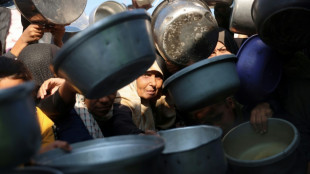
-
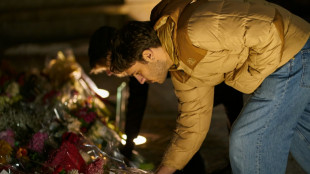 US suspends green card lottery after MIT professor, Brown University killings
US suspends green card lottery after MIT professor, Brown University killings
-
Arsenal in the 'right place' as Arteta marks six years at club

-
 Sudan's El-Fasher under the RSF, destroyed and 'full of bodies'
Sudan's El-Fasher under the RSF, destroyed and 'full of bodies'
-
From farms to court, climate-hit communities take on big polluters

-
 Liverpool have 'moved on' from Salah furore, says upbeat Slot
Liverpool have 'moved on' from Salah furore, says upbeat Slot
-
Norway crown princess likely to undergo lung transplant

-
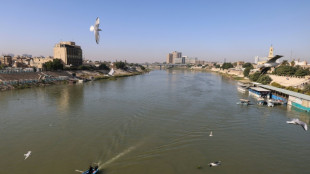 Iraq negotiates new coalition under US pressure
Iraq negotiates new coalition under US pressure
-
France's budget hits snag in setback for embattled PM

-
 Putin hails Ukraine gains, threatens more, in annual press conference
Putin hails Ukraine gains, threatens more, in annual press conference
-
US suspends green card lottery after Brown, MIT professor shootings
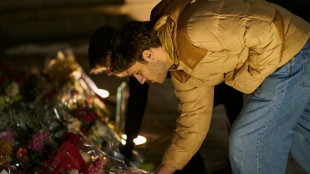
-
 Chelsea's Maresca says Man City link '100 percent' speculation
Chelsea's Maresca says Man City link '100 percent' speculation
-
Dominant Head moves into Bradman territory with fourth Adelaide ton

-
 Arsenal battle to stay top of Christmas charts
Arsenal battle to stay top of Christmas charts
-
Mexican low-cost airlines Volaris and Viva agree to merger

-
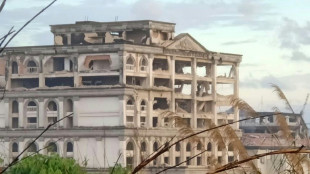 Border casinos caught in Thailand-Cambodia crossfire
Border casinos caught in Thailand-Cambodia crossfire
-
Australia's Head slams unbeaten 142 to crush England's Ashes hopes

-
 Epstein files due as US confronts long-delayed reckoning
Epstein files due as US confronts long-delayed reckoning
-
'Not our enemy': Rush to rearm sparks backlash in east Germany
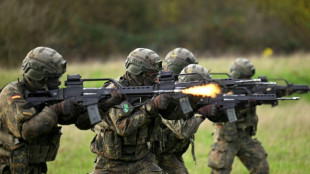
-
 West Indies 110-0, trail by 465, after Conway's epic 227 for New Zealand
West Indies 110-0, trail by 465, after Conway's epic 227 for New Zealand
-
Arsonists target Bangladesh newspapers after student leader's death

-
 Volatile Oracle shares a proxy for Wall Street's AI jitters
Volatile Oracle shares a proxy for Wall Street's AI jitters
-
Tears at tribute to firefighter killed in Hong Kong blaze

-
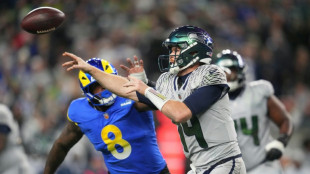 Seahawks edge Rams in overtime thriller to seize NFC lead
Seahawks edge Rams in overtime thriller to seize NFC lead
-
Teenager Flagg leads Mavericks to upset of Pistons

-
 Australia's Head fires quickfire 68 as England's Ashes hopes fade
Australia's Head fires quickfire 68 as England's Ashes hopes fade
-
Japan hikes interest rates to 30-year-high

-
 Brazil's top court strikes down law blocking Indigenous land claims
Brazil's top court strikes down law blocking Indigenous land claims
-
Conway falls for 227 as New Zealand pass 500 in West Indies Test

-
 'We are ghosts': Britain's migrant night workers
'We are ghosts': Britain's migrant night workers
-
Asian markets rise as US inflation eases, Micron soothes tech fears
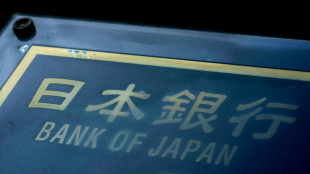
-
 Giant lanterns light up Christmas in Catholic Philippines
Giant lanterns light up Christmas in Catholic Philippines
-
TikTok: key things to know
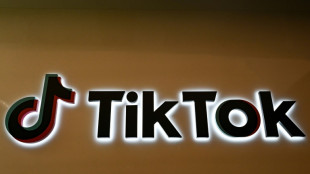
-
 Putin, emboldened by Ukraine gains, to hold annual presser
Putin, emboldened by Ukraine gains, to hold annual presser
-
Deportation fears spur US migrants to entrust guardianship of their children

| RBGPF | 0% | 80.22 | $ | |
| GSK | 0.55% | 48.556 | $ | |
| RIO | 0.58% | 78.08 | $ | |
| RYCEF | -0.98% | 15.25 | $ | |
| SCS | 0.12% | 16.14 | $ | |
| CMSC | 0.02% | 23.294 | $ | |
| BCC | -2.57% | 75.755 | $ | |
| NGG | -0.09% | 76.32 | $ | |
| CMSD | -0.06% | 23.265 | $ | |
| RELX | 0.12% | 40.7 | $ | |
| AZN | 0.91% | 91.44 | $ | |
| VOD | 0.86% | 12.911 | $ | |
| BTI | -0.39% | 56.82 | $ | |
| BCE | 0.47% | 22.958 | $ | |
| JRI | 0.01% | 13.431 | $ | |
| BP | 1.62% | 33.86 | $ |

Fortress Europe? The Nazi 'wall' that failed to prevent D-Day
For the 80th D-Day landings anniversary, AFP travelled the coastlines from northern Norway to southern France to find out what became of the German-built Atlantic Wall defences aimed at keeping the Allies at bay.
Fearing an Allied invasion of occupied Europe, Adolf Hitler ordered in 1942 the building of a 5,000-kilometre (3,100-mile) coastal defence system studded with bunkers, gun emplacements, tank traps and other obstacles.
AFP photojournalist Olivier Morin spent three weeks documenting the remnants of the supposedly impregnable fortifications, which were breached by the Allies on D-Day.
Here is a brief recap of the wall:
- 300,000 labourers -
More than 20 million cubic metres of concrete and 1.2 million tonnes of steel went into building thousands of fortifications linked by barbed wire along the Atlantic and North Sea shores, from France through Belgium, the Netherlands and Denmark to Norway.
Over 300,000 workers of all nationalities worked on the French part alone, some of them prisoners press-ganged into labour but also hard-up people desperate for work, or German factory workers.
Entire communities were forced off their land to make way for Hitler's biggest defence project, which took over two years to build.
In the Dutch capital of Amsterdam, thousands of homes, seven schools, three churches and two hospitals were demolished in the name of defending "Fortress Europe".
- 'Hedgehogs' and 'asparagus' -
In 1944, with an Allied invasion appearing imminent, German Field Marshal Erwin Rommel was entrusted with boosting the defences.
The Allies had managed to dupe the Nazis into thinking that they were planning a landing on France's north coast, near Calais, which meant they had left long stretches of the coast wide open for invasion, including what would become the Normandy landing beaches.
Rommel rushed to station more than 2,000 tanks, assault cannons and tank destroyers along the Normandy coastline, including "Czech hedgehogs" -- spiky steel anti-tank obstacles -- and wooden poles nicknamed "Rommel's Asparagus" used to try to prevent gliders and paratroops from landing.
Over five million mines were planted along the beaches. But it was too little, too late.
- Breached within hours -
The Atlantic Wall proved woefully inadequate in the face of the planning that went into the D-Day landings of June 6, 1944.
That evening, 156,000 Allied soldiers punched a hole in the defences of 80,000 German soldiers.
The United States suffered heavy losses, especially on Omaha beach, where its soldiers found themselves trapped on the narrow strip beneath high cliffs of sand and stone.
Despite the challenges, the British, French, Americans and Canadians took just days to establish a beachhead in Normandy, which they used to land 800,000 troops and over 100,000 vehicles by the end of June.
Within 11 months, Germany had surrendered.
- Airbnb rentals -
Remnants of the Atlantic Wall remain scattered along the coast of Europe but many have been swallowed by the sand or sunk into the sea.
Some have been converted into museums, as at Batz-sur-Mer in France, Ostend in Belgium and Noordwijk in the Netherlands.
In the northern French city of Cherbourg, graffiti artists have transformed one bunker into a spaceship, while in the Brittany village of Saint-Pabu another has been renovated and turned into a Airbnb rental.
The Dutch government launched in 2014 an annual "Bunker Day" when the walls of the fortifications are thrown open to the public.
S.F.Warren--AMWN


